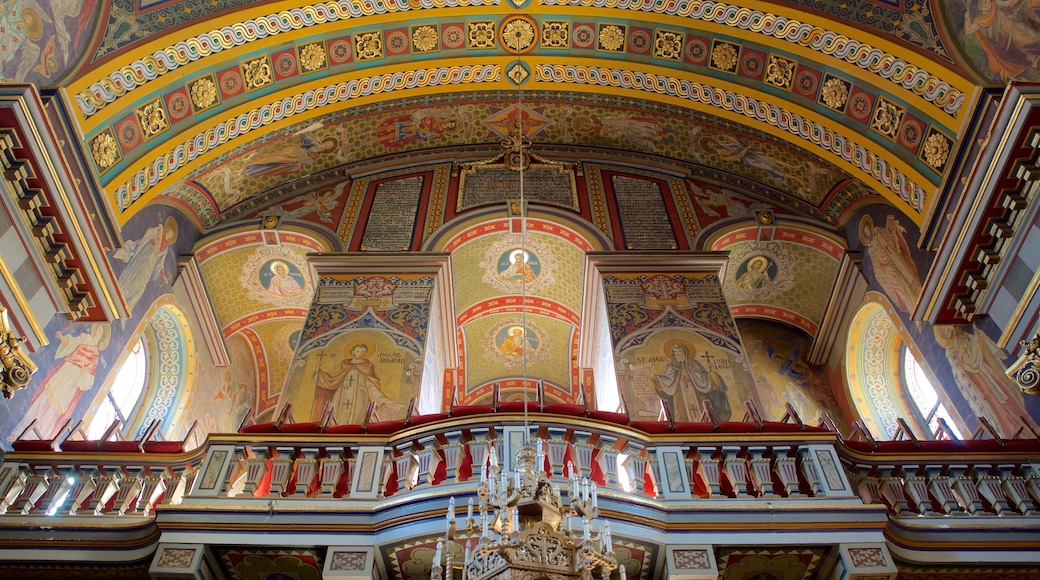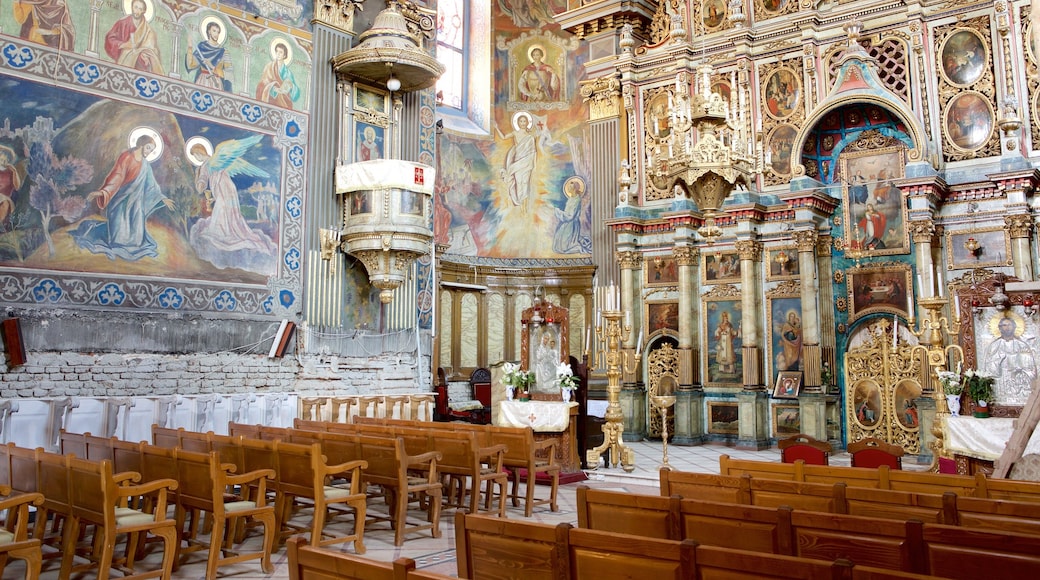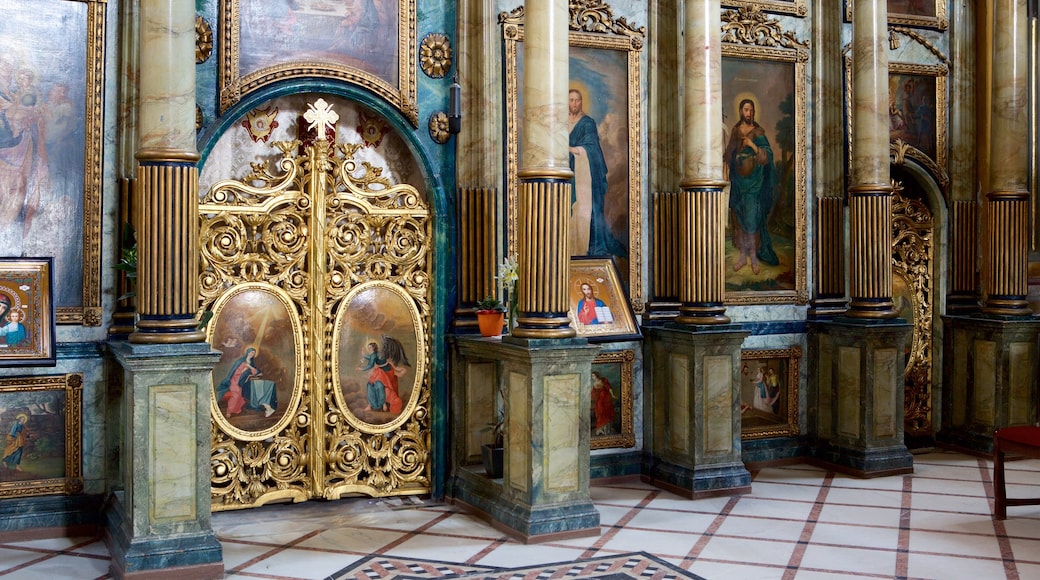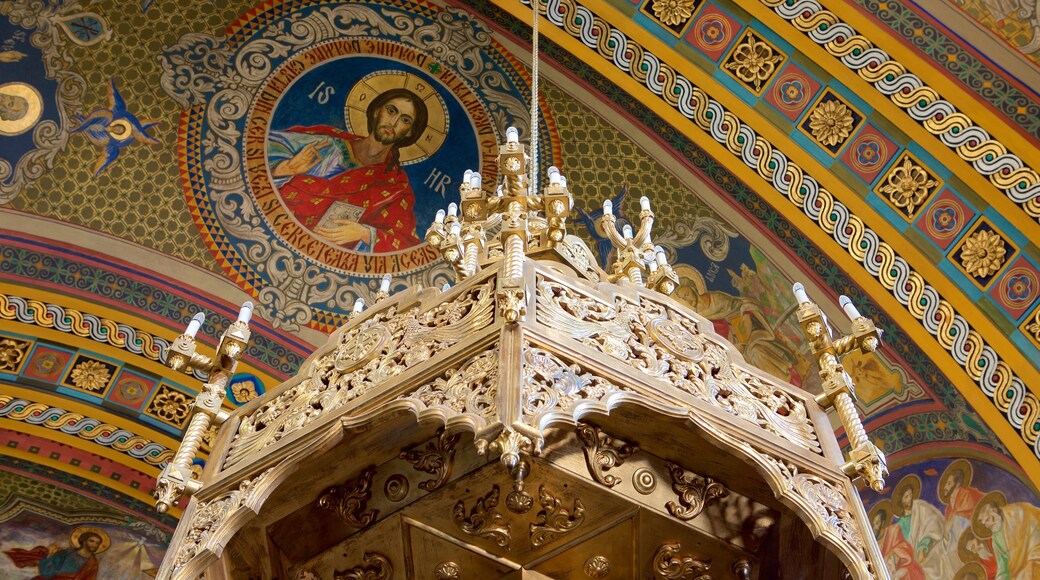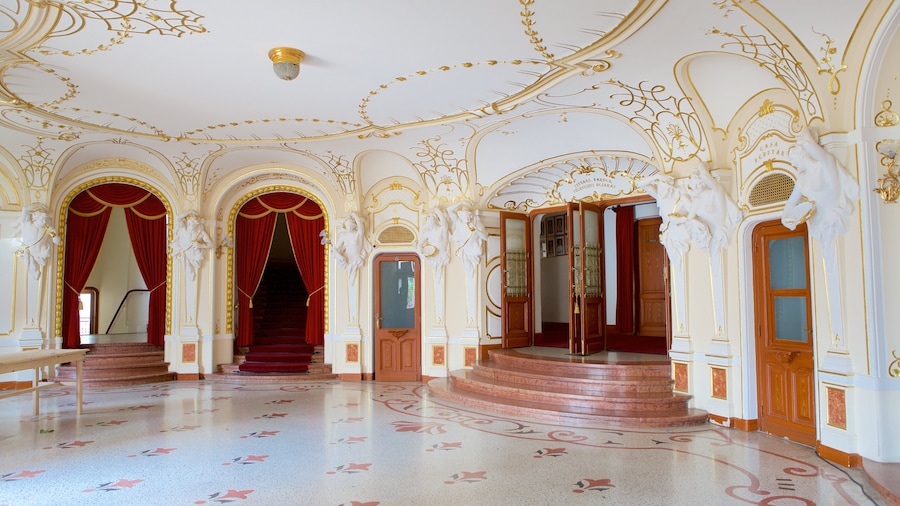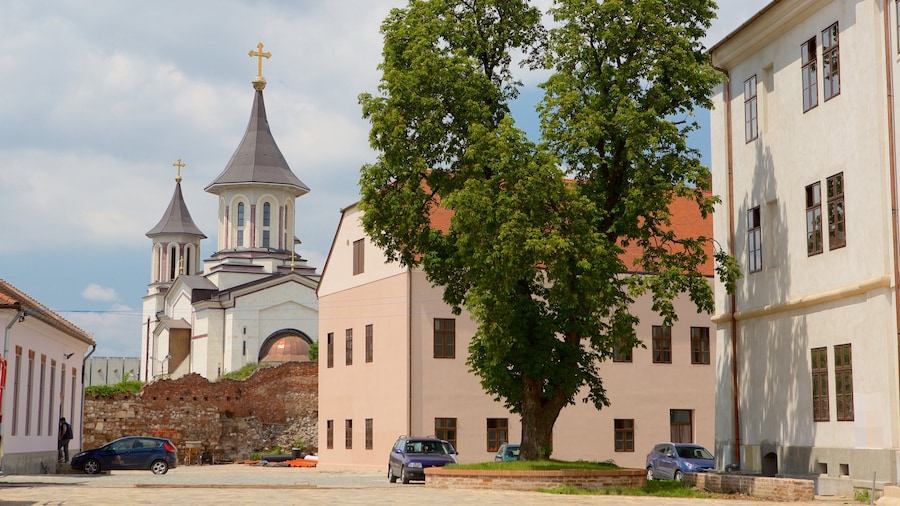Admire this iconic Baroque church, known for a distinct lunar mechanism on its tall tower.
The Moon Church is named for an eye-catching sphere on its exterior that moves in accordance with the moon’s phases. Venture inside the church to discover beautiful iconostasis and frescos as well as the tombs of several important bishops. Save time to explore nearby Piaţa Unirii, one of Oradea’s main public squares.
The church was designed in the late 18th century by architect Iacob Edner, with funding provided by the local community. It was consecrated in 1832. Gaze up at the building’s 180-foot (55-meter) bell tower, which features the distinctive lunar mechanism designed by master clockmaker Georg Rueppert. This mechanism spins a 10-foot (3-meter) sphere, which is painted half in black and half in gold. The sphere completes a full rotation every 28 days, in accordance with the moon’s rotation around the earth.
Step inside the church to inspect paintings by Romanian Paul Murgu and Serbian brothers Alexandru and Arsenie Teodorovici. Originally completed in 1831, the paintings have been restored several times throughout the 20th century.
View a painting of Horea, one of the leaders of the city’s 1784 riot, on the iconostasis. The painting you see today is a copy, with the original housed in the Orthodox Bishopric Museum of Oradea. Look for the tombs of several important bishops as well as those containing several of the church’s founders.
Walk out into surrounding Piaţa Unirii square, which features an equestrian statue of Mihai Viteazul, the prince of Wallachia. The prince is said to have spent time in the city just before the end of his reign in 1601. To the right lies City Hall, which was constructed in the early 20th century. Listen for the sound of its charming bells, which toll hourly.
Find the Moon Church in the southeast corner of Piaţa Unirii. From Piaţa Republicii, cross the bridge south over the river Crişul Repede. Alternatively, take one of the southbound trams from the city’s train station
